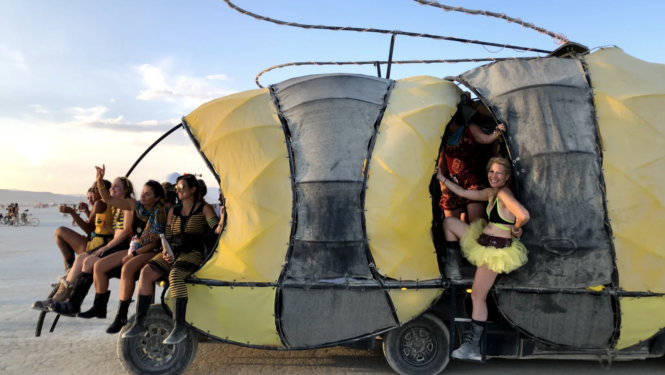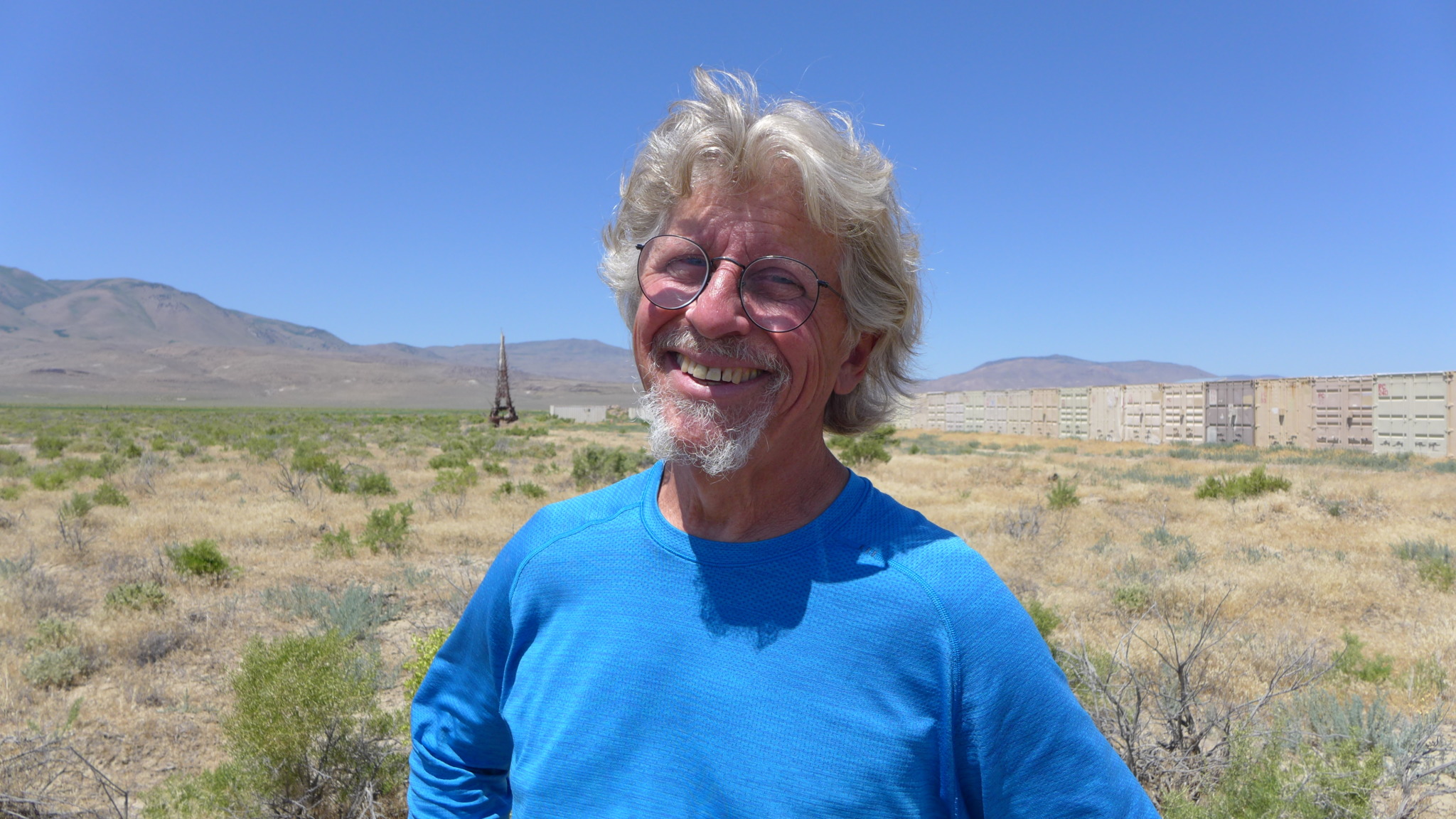Over the past year, we’ve had many conversations with the global community. You told us you are eager to connect, to learn, to share ideas, find collaborators, and imagine new projects with other Burners. You said you were curious about the inner workings and were interested in collaborating with teams and leaders within Burning Man Project.
We heard you. In spring 2021 we followed up and invited everyone who had signaled their interest to participate in Burning Man Hive, our community platform for Burners. We encouraged these participants to connect, learn, teach and constellate around four topic areas: sustainability, Radical Inclusion, Diversity, & Equity (R.I.D.E.), health and safety, and leadership and participation.
The Hive team collaborated with small but mighty groups of inspired and motivated Burners to support the projects and conversations that emerged and gained momentum. The first iteration of Hive wound up in May. Collectively, we shared and learned a ton.
YOU are invited to bring your curiosity, your projects, and ideas for the year ahead! To join, go to hive.burningman.org and log in with your Burner Profile username and password (if you don’t have a Burner Profile yet, you can create one here).
Read on for stories of community building and co-learning from three out of many remarkable Hive participants who joined our first iteration.
Sheila Bhardwaj
Supporting Camp Culture through R.I.D.E.
 Sheila Bhardwaj visited Black Rock City for the first time in 2013 and didn’t look back for seven years. She’s been a greeter, camped with OFOSHO and Hotel California, participated in the Black Rock City ultramarathon, and added her passion to Hive. After participating in a DEI workshop with Hotel California, Sheila became curious about ways she could put her learnings into practice in the broader Burning Man community.
Sheila Bhardwaj visited Black Rock City for the first time in 2013 and didn’t look back for seven years. She’s been a greeter, camped with OFOSHO and Hotel California, participated in the Black Rock City ultramarathon, and added her passion to Hive. After participating in a DEI workshop with Hotel California, Sheila became curious about ways she could put her learnings into practice in the broader Burning Man community.
Sheila: I was really excited that you were letting everyone in on the process of helping to shape Burning Man and the future, and shape the cultural direction — that it’s an invitation to come and learn more. It was primarily curiosity to hear how the organization was thinking about shaping the culture.
One of the camps I’ve attended with is Hotel California. Instead of attending the Burn [in 2020], we allocated some resources to do a workshop with a facilitator named LaMisha Hill centered around DEI and how structural inequality shows up at the Burn.
Obviously without a Burn happening there wasn’t yet an opportunity for these resources to go somewhere. But one of the ideas that had come up was to collaborate with the organization to learn how we can be supportive, and also that camps should do their own work on this while the organization does as well.
[In Hive] we did a series of exercises. There’s a lot of really great material that Rachel McCrafty, Shirley Strong, and the other leads shared. They came in with so much wisdom. It was one of the most inspiring things that I’ve done this year.
During some of the workshops, we came forth with ideas. One of the ideas was around camp guidance — what resources can we bring together for camps to center around inclusion and diversity? Accessibility was a theme that came up; art was a theme that came up… deescalation and conflict resolution, and other themes.
We are still refining the outcome. It could be a booklet that contains resources on everything from camp building, developing camp culture and identity, managing conflicts, facilitating race-based conflicts, or bringing into awareness race, and gender-based biases and intersectionality, and how that can show up with the Burn, which is a lot, to take on.
And I think that it’s one of the exciting pieces about starting on this work. I’ve met so many new Burners that I wouldn’t have connected with previously. [I met] people who really want to be part of helping to support the new cultural direction and the change that is happening, because it’s very needed.
Tim Barry (aka Frog)
Architecting Sustainable Burning Man Culture
Retired architect Tim Barry, a.k.a. Frog, began his career in the Peace Corps and has been volunteering ever since. In the 1990s he was instrumental in developing LEED (Leadership in Energy and Environmental Design) certification. In recent years, Frog has contributed to Burners Without Borders at Fly Ranch and various Black Rock City Department of Public Works teams. He’s currently helping the global community meet 2030 sustainability goals by creating and teaching BLAST green standards for implementation in Black Rock City and at the Regionals. Frog dove into Sustainability Lab, sharing conversations and guiding projects around prototyping sustainable and regenerative events.
Frog: I particularly focused on the Sustainability Lab and it was fantastic. I went to all the sessions and it was a great way to meet people and trade ideas. Simultaneously, I started working with the Green Theme Camp because we’re developing BLAST. [This allowed me to share] my experience developing the LEED system and then applying it for 20-some years on real projects. The BLAST system is really exciting. [It enables us] to create standards and approaches that we could take even to a refugee camp, for example. Like I am doing right now.
I’m just so excited about all the possibilities that Hive has created. I’m particularly interested in where we can take the Sustainability Lab, and connect it with the Green Theme Camp Community. Because if we’re trying to make the Burn carbon neutral, for example — which is one of my areas of responsibility — we gotta get a lot of people involved. We have to teach people about the principles and the concepts. It’s an exciting area — we’re experimenting with ideas and prototyping, then figuring out how we can scale it up to the playa, then scale it further to Regional Burns, then to wherever in the default world.
I’m not as young as I used to be, you know, so I’m not quite as physically able to help do things like build shade structures on the playa. But I have been a teacher all my life, at all different levels. I’ve taught green since the beginning, I mean, that was my whole thing. I started teaching the LEED system before it was even out there because architecture students needed to understand it.
I’m just very fortunate that, at my stage in life, I have a little retirement and I can contribute and give back. So that’s what I’m here to do, to give back and to teach and volunteer for the organization. So this is my gift.
Artist Scott Froschauer
Scott Froschauer’s first Black Rock City event was 2004. Since then he has designed several large art installations and worked on many more, run an Esplande-front theme camp, and been the build and burn lead on projects such as 2013’s Church Trap and 2017’s MUCARO. The past few years he’s focused on mentoring first-time Burning Man artists. Scott jumped into Burning Man Hive as part of his ongoing work to support aspiring, and in particular female BIPOC, Burning Man artists.
Scott: A few years ago. I put together this thing that I was calling the Burning Man Artist Mentorship Program. There was, I can’t even remember what year now, this program that was going on where people from the Regionals were coming to the Black Rock City event and shadowing their counterparts within the organization. I thought that was a really great idea. I was wondering: How could we develop a system where emerging artists could shadow or learn from established artists?
I just started just by saying I wanted to do it. That started attracting other people who were interested in something like that. I had a little group of people who we were working together with, and also put the word out to find people who were just looking to learn. I would find first-time builders and just jump in with them.
That’s where I was at the time when I found out about Hive. It seemed like the exact right fit for where I was at. I’m trying to do this thing, and here’s Burning Man creating an infrastructure to support whatever that thing is. I was excited to use Hive as part of that structure for my organization, to help me organize, to help me reach out, to help me systematize things.
What Hive did for me was it allowed me to engage people at an even earlier stage… that meant that those connections were happening to a much broader audience and happening to people who were at a much earlier stage of their project.
I’m excited to talk to and inspire that person to take that random idea and see it through to fruition, but they’re not gonna have as much momentum as much buy-in as other projects that I was interacting with before Hive. So casting a wider net, but in casting that wider net, you’re getting maybe just as many actual final products, but you’re getting a lot more in the net.
If you have any questions, feel free to email hivesupport@burningman.org.
Cover image of “The Apis” by BeeCharge theme camp, 2018 (Photo by Kendra Godwin)




Reminder: Burning Man Project has a responsibility to maintain this space for the benefit of all participants, to ensure that comments serve to enhance the experience of our visitors, rather than cause harm. While spirited conversation is welcome, unruly and rude behavior is not. Posts that are harmful to others or run counter to the spirit of civil discourse may be removed.
Please review our COMMENT POLICY here, then comment with care: https://journal.burningman.org/comment-policy/
Report comment
Awesome. How much does it cost?
Report comment
Zero. Zip. Nada. C’est gratuit. 100 percent free.
Report comment
Comments are closed.